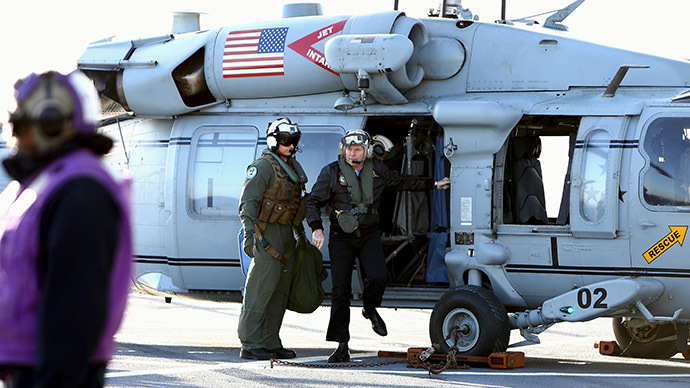Japan joins US-Aussie military drills amid regional tensions

The US and Australia are marking the start of their joint biennial military exercises on Sunday, with Japan joining in for the first time. The drills are being held amid growing tensions over the disputed South China Sea region.
The ‘Talisman Saber’ exercises will last two weeks, with 30,000 US and Australian troops taking part
There will also be 40 Japanese officers and soldiers taking part,
as well as 500 troops from New Zealand. The exercises are taking
place in the Northern Territory and Queensland.
Planned operations are being held in the sea, in the air and on
land.
“It is a very, very important alliance,” Prime Minister
Tony Abbott said, referring to Australia-US ties. “It's a
very important relationship and right now we are facing quite
significant challenges in many parts of the world, but
particularly in the Middle East.”
READ MORE: Japan military may support foreign forces abroad for first time in 70 years
Talisman Saber involves biennial joint drills by the Australian
Defense Force and the United States Military in at least six
locations in northern and central Australia. This is the sixth
time such exercises have been held since 2005.
Australia has been working on expanding ties with Japan in the
last few years. Last summer, Abbott described Japanese PM Shinzo
Abe as “a very, very close friend” during his state visit to
Canberra.
The military exercises are happening amid growing tensions in the
Pacific region, with China wanting to increase its military
capability.
On Tuesday, Beijing announced a new defense strategy designed to
improve its naval capability. The new approach will now shift
from “territorial air defense” to both “defense and
offense.” China also slammed its neighbors for their
“provocative actions” on its “reefs and
islands.”
READ MORE: Beijing rejects US criticism over construction in South China Sea
Making relations more strained is the growing dispute with
Beijing over a group of small islands. While China claims most of
the South China Sea, the Philippines, Vietnam, Malaysia, Taiwan
and Brunei also lay claim to parts of the resource-rich area..
A concern the three nations participating in the drills share is
that China might impose air and sea restrictions in the Spratlys
archipelago, should it complete construction of its seven
artificial islands there.
Meanwhile, Beijing maintains that it has every right to install
an Air Defence Identification Zone if needed.
When asked at a regular news briefing if Beijing was concerned
the Talisman Saber exercises appeared to be aimed at China,
China's Foreign Ministry spokeswoman Hua Chunying said she was
“not worried.”
“We believe the relevant countries should all play a
proactive and constructive role to strengthen mutual trust and
cooperation between countries in the region,” Reuters quoted
her as saying.
However, some analysts believe that the US and its allies are
looking at China. “There's subtle message going out that at
every level - from hardware to technical and strategic expertise
and cooperation - the main American allies and America are
working very closely together largely to account for China,”
a China specialist at the University of Sydney, John Lee, told
AFP.












